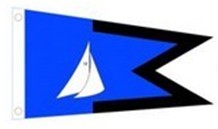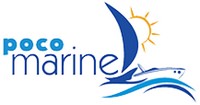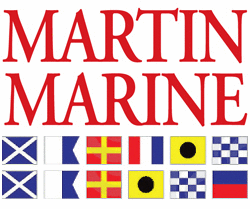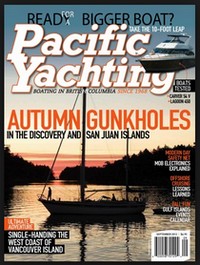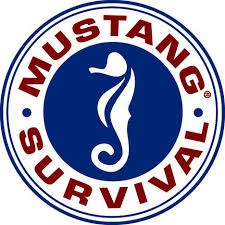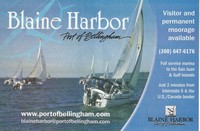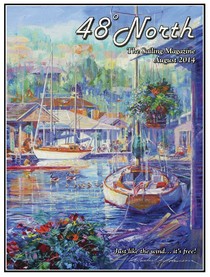MYCBC – Why Join Us › Forums › Member Cruises › Fraser River, Pitt River and Pitt Lake Advisory Report
Tagged: Fraser River, Pitt Lake, Pitt River
- This topic has 0 replies, 1 voice, and was last updated 3 years, 4 months ago by
 Richard Robinson.
Richard Robinson.
-
AuthorPosts
-
February 18, 2022 at 10:00 pm #10232
Frechette (spring runoff) can start as early as mid-March and run as late as mid-July and during these times the Fraser and Pitt are running very high & very fast with a ton of debris and deadheads in the water. In the fall & winter, any prolonged rains can also cause extreme water levels and currents. Check out the Fraser River depths and currents here – https://www2.pac.dfo-mpo.gc.ca/index-eng.html. You need to make a judgement call if the river is running low, mid, or high. Do not attempt the river during higher water flows. Always look up tides in Steveston & New Westminster before any journey to see what they are doing.
Learn how to use the advanced “compare” features on Windy.com, and you can simultaneously view all 5 major global weather computer forecast models (ECMWF, GFS, METEOBLUE, NAM, ICON) that are used by every one of the other forecaster providers listed here.
(Hint – go to Windy.com, zoom into your area and click on a location to get a little “flag” to pop up, click on the drop-down arrow on that flag, then find & click on “compare”)Fraser River working traffic is available on VHF 74, and you will want to monitor this and 16 for any large vessel traffic especially around some of the blind corners. There are 2 train bridges that you will need to hail on VHF 74 to request opening, one at the Patullo and the other at the CP tracks close to the Pitt River Bridge. The Patullo will have significant competing VHF traffic, so pick the time for your call carefully, and listen carefully too. Monitor 74 for at least 30 minutes before you reach either bridge, and if you hear another ship requesting the bridges to open, ask to “piggyback” onto that bridge opening. Weekday openings of the bridges from 6am to 6pm can have up to 2 hour delays due to traffic. The Pitt train bridge is old and prone to malfunction and an extended wait over 2 hours could happen. The Pitt Train Bridge engineer is old and prone to malfunction too – don’t be afraid to hail him on higher-power VHF settings (5watts sometimes doesn’t get through to him and you’ve got to use 20/25watts or more) or call him at the phone number posted at the bridge. The Pitt River vehicle bridge over Hwy 7 has 16-metre clearance and you **should** clear without problem even at the highest high tides (but I take zero responsibility).
For trips from East-to-West downriver during mid/late summer low water flows, I like to start at High Tide and let the current pull us down. High tide at Pitt River Bridge can be calculated as +60/+90 minutes from High Tide at New Westminster. High Tide at Mission is +120 minutes from High Tide at New Westminster. Be very careful monitoring depths and navigable channels during low tide and low water flows, as the channels become very narrow and any submerged logs or debris are likely hidden just beneath the surface of the chocolate-milk coloured water. Be sure to have your anchor ready in case of an emergency when letting the current pull you downriver as currents can run 8 knots and you don’t want to be pulled into a low bridge or piling during an engine failure. I run under power with ballast empty and rudders/centerboard up but be extremely wary of wake from tugs & large ships – go slow and take them head-on. Taking the wake from a fully loaded tug broad-side with the ballast empty will dip your mast in the water. The trip from Pitt Meadows to Steveston takes 90 minutes under power.
For trips from East-to-West downriver during mid-water flows, I like to plan them during an inbound tide to reduce the current. I will leave Pitt Meadows around the time when it is dead-low tide in New Westminster – you’ll be carried with the current from Pitt Meadows to Coquitlam, have slack tide through New West and have the tiniest of an inbound current coming into Steveston. Expect 2 hours under power.
Coming up-river West to East, we usually tie up at the docks at Steveston (49°07’23.6″N 123°11’02.2″W) and take advantage of the free power & water hookups waiting for the perfect tide to take us up the river – not to mention all the restaurants and shops. There is a nominal fee for overnight moorage and it’s best to call Steveston Harbour Authority early to book a spot. The Steveston boat launch is nearby at 49.117521, -123.160938, and it has decent prices and good long-term parking. We have used this launch before for fishing off Sandheads, and once for pulling our MacGregor out during a completely unexpected severe Frechette in mid-July 2020.
If you are headed West-to-East upsteam during low water during late summer, feel free to start your journey at dead low tide but expect a decent but manageable current for the first 30-45 minutes. For mid-flow Fraser water levels, be sure to plan your journey on a large/strong incoming tide and don’t even start before one hour after dead low tide in Steveston. Expect 2.5 hours from Steveston to Pitt Meadows under power. Do not even attempt this in the days following a significant rain/melt event unless you are in a steel or aluminum jet-boat – the current and debris will destroy you, your soul & your boat. (Trust me.)
STEVESTON NOTES: Check Gas Dock Hours in Advance. Call Steveston Harbour Authority in advance to book overnight moorage. Moorage next to the Whale Tour Boats is first-come first serve and there is no-charge for just a few hours during the day. Water & Power is available. If you show up unannounced after 9pm and leave early the next day you can sometimes escape all fees although there is a posted phone number you can call to leave a credit card. Romania Country Bread – 3680 Moncton Street, Richmond, BC is the best bread you will ever eat in your lifetime.
FRASER MOUTH/SANDHEADS NOTES: Be extremely cautious around the mouth of the Fraser for standing waves, especially on an outgoing tide with brisk Southerly/Westerly winds. We hit the mouth of the North Arm quite a few years ago with moderate 20 knot Southwesterly Winds with a large Ebbing/Dropping Tide flowing in the opposite direction from the Fraser/Burrard Inlet/Howe Sound and the waves were 9′ vertical. That was the worst day ever out on the water.
SOUTH ARM NOTES: Be wary of fishing boats and nets – look for floats and attached nets from shore-to-shore. Be wary of large/massive vessel traffic/Seaspan Ferries/Barges and be prepared to give way. Be extremely wary of the navigation channel, and don’t be afraid to head to the sides if you’re face-to-face with shipping traffic. Be wary of Log Debris and Deadheads. There is a large pipeline construction project 200 meters west of the Alex Fraser Bridge 2/3 of the way towards the north shore….be careful as this is a busy/blind pinch-point. Be careful around the 2 or 3 dog-leg blind corners. **If you have time, check out 49.123337, -123.085367. Feel free to poke right in and take some pictures….we haven’t been yelled at even once.
NORTH ARM NOTES: Be wary of Tugs & Log Booms, Log Debris & Deadheads. This is a much narrower channel and it is not unusual to have to pass tugs and log booms with 20-30′ to spare, while power-boaters pass within feet on either side. Plenty of dog-leg blind corners to keep you on your toes. Wreck Beach area has some somewhat sheltered temporary anchorages – bring your binoculars for entertainment. MacDonald Beach is a popular launch (with bathrooms if you need them) but watch out for shallows, debris, submerged logs & ancient docks. If you ever find yourself locked in overnight, THE GATE IS NEVER LOCKED!!! Just pull hard on the lock and it will open 24/7. The old caretaker will charge you $100 if you wake him up – trust me. Pay careful attention to charts & depth-finder all-year-round.
After you pass the Port Mann Bridge, pay attention to your depths as you go past Douglas Island as there are some shallows there that you need to be aware of – nothing tricky but the navigable channel does narrow a bit.. As you are coming up the Pitt River, there is a dock at the Gillnetter Pub you can use if you want to order takeout or grab refreshments at the beer and wine store. There is also a Shell gas station & convenience store right across the Mary Hill Bypass. Radio the CP train bridge as soon as you get to the Pitt River, as delays can be up to a couple hours if there is significant train traffic or the bridge decides on a siesta.
If you need fuel, Pitt Meadows Marina has a fuel dock. Call Dora ahead of time to confirm hours & availability – (604) 465-7713. Pitt River Boat Club also usually has fuel (again, check ahead) but they are in a narrow, tricky channel and they are discouraging visitors during COVID.
From there, as you head up the Pitt, you can either take the West or East channels, being careful to avoid the middle as there are shallows and sandbars the next few kms. I would recommend staying to the Starboard side of the Port (westerly) channel as it is wider with less debris. I keep my sailboat at the Pitt Meadows Marina which you will pass on your starboard just after the Pitt River Bridge.
Once you get to Pitt Lake (Grant Narrows Park), pay careful attention to the well-marked navigation channel that will lead you to the east side of the lake, and then straight up the middle. Deviating even a few feet from the channel will lead you into the shallows and a possible/likely grounding. Even in the channel, be on the lookout for some massive logs and obstacles that have wedged in the mud. The lake is tidal with up to a 6-7′ swing, and tides can be estimated by looking up New Westminster Tides and adding around 60-90 minutes. Keep a mental diary of tides based upon your experience.
There are extremely limited number of sheltered spots on the lake to take refuge during significant frontal winds and unexpected local squalls and storms can & do happen (speaking from experience). Daytime anabatic winds will blow 15-20knots until sunset creating a 2-3′ chop on hot & sunny days, then calm down significantly over night. As soon as the sun sets, expect ice-cold but refreshing katabatic winds to drift down from the taller glacial peaks. From South to North, here are my personal recommendations:
Widgeon/Grant Narrows – 49°21’07.7″N 122°37’17.0″W. Good anchorage before you get to the lake and well protected from strong Northerly outflows. Brisk currents during big tide swings. Busy spot with lots of boat & canoe traffic headed up Widgeon. If you have a dinghy, it’s a nice day trip up to Widgeon falls. For an amazing hike, Grant Narrows offers some outrageously beautiful options and lookouts – bring a camera and bear spray.
Christian Cove – 49°24’11.5″N 122°34’52.2″W Private property, but one of the best mid-lake shelters available during a big wind.
Raven Creek Marine Park – 49°23’57.2″N 122°32’05.2″W. Decent anchorage & rocky/sandy beach. Outhouses (bring bleach/cleaner & your own TP). Nice spot for a bonfire. Can be busy at times. Difficult to stern-tie, and highly exposed to strong Westerly or Northerly winds.
Osprey Marine Park – 49°27’55.8″N 122°31’06.0″W. Decent anchorage & beautiful sandy but narrow beach along the high tide line. Steep drop-offs. Excellent spot for a bonfire, and amazing sunsets. Can be busy in the summer or weekends. Easy to stern-tie and highly exposed to strong Westerly or Northerly winds. Outhouses (but difficult to access from further away – bring bleach/cleaner & your own TP).
Cozen Point – 49°27’55.2″N 122°32’15.7″W. Limited anchorage, exposed to strong Northerlies. Crowded and busy, but beautiful waterfall.
North Pitt – 49°30’49.5″N 122°35’06.5″W. Decent, quiet anchorage slightly better protected than elsewhere during brisk westerlies. Nice narrow sandy beach during lower tides and lower lake levels later in the summer but the beach is almost inaccessible during higher water levels.
North Pitt – 49°32’15.5″N 122°35’43.9″W. Well protected safe anchorage. Watch your depths as there are some shallows, grounded logs, and old wrecks to avoid. There is very limited space to tie up to the rickety private docks but worthwhile to go ashore to stretch your legs. The logging road here goes all the way to Squamish and if you have mountain bikes and are in moderately good shape, the infamous & majestic Pitt River Hot Springs are roughly 22km away. Bring bear spray, bear bells & bear bangers if you go more than a km or so from the docks as there are infinite (and massive, well fed) black bears, a couple resident grizzlies and it feels like perfect cougar country although I’ve never seen one. If you come across the herds of Roosevelt Elk, you will be amazed!
Richard Robinson – richardsmcse@hotmail.com
Disclaimer – While I wrote it, I take no responsibility for the accuracy of any of the content or information below. Always use your best judgement and all boating resources available. If you sink it, don’t call me unless it’s to buy me a beer and tell me some stories. Or I’ll buy you a beer. Good luck!
-
This topic was modified 3 years, 4 months ago by
 Richard Robinson.
Richard Robinson.
-
This topic was modified 3 years, 4 months ago by
 Richard Robinson.
Richard Robinson.
-
This topic was modified 3 years, 4 months ago by
 Richard Robinson.
Richard Robinson.
-
This topic was modified 3 years, 4 months ago by
 Richard Robinson.
Richard Robinson.
-
This topic was modified 3 years, 4 months ago by
-
AuthorPosts
- You must be logged in to reply to this topic.

